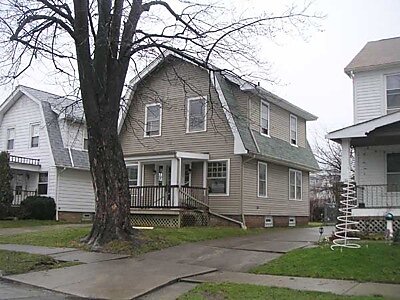On Thursday, March 18, John Stossel’s show on the Fox Business News network will feature a discussion of how taxes and regulation have prevented urban areas like Cleveland from recovering from the decline of the industries that once supported those regions.
While the “stars” of the show were Drew Carey and Reason Magazine’s Nick Gillespie, Stossel spent a few minutes on zoning and land-use regulation. When searching for someone to advocate such land-use regulation, they happened to ask James Kunstler, author of The Geography of Nowhere, a critique of suburbia.
Kunstler’s response was emphatic. First, he called one of Stossel’s other guests (okay, it was me) “a shill for the sprawl-builders.” Then he added, “Please tell Stoessel [sic] he can kiss my ass.” He was so proud of this response that he posted it on his blog (look for it in the archive if it has disappeared from his home page).
Kunstler is biased against mobility and low-density housing, but he must be a good writer because he has lots of fans. As soon as he posted his rude reply, the blogosphere lit up with arguments from progressive, conservative, and even libertarian writers claiming that sprawl is the result of central planning and zoning and therefore libertarians such as Stossel and Cato should support smart-growth policies aimed at containing sprawl.
Sprawl is “mandated by a vast and seemingly intractable network of government regulations, from zoning laws and building codes to street design regulations,” claims conservative Austin Bramwell. As a result, “government planning makes sprawl ubiquitous.”
Anarcho-libertarian Kevin Carson quotes The Geography of Nowhere as the authority for how planners like Robert Moses forced people to live in sprawl. “Local governments have been almost universally dominated by an unholy alliance of real estate developers and other commercial interests” that insisted on urban sprawl, says Carson.
Progressive Matthew Yglesias describes sprawl as “centrally planned suburbia” and accuses libertarians of being hypocrites because they don’t oppose zoning codes that mandate sprawl. He adds that “People sometimes cite Houston as an example of a libertarian-style ‘no zoning’ city, but this is mostly a myth” (citing a paper that finds that Houston “regulates land use almost as intricately as cities with zoning”).
This is all balderdash and poppycock. People who believe it should get their noses out of Kunstler’s biased diatribes and look at some real data and see how zoning actually worked before it was hijacked by authoritarian urban planners. It doesn’t take much to show that areas without any zoning or regulation will — if developed today — end up as what planners call “sprawl.” Until recently, all that zoning has done has been to affirm the kind of development that people want.
Contrary to Carson’s claim, zoning was not invented by developers trying to impose their lifestyle preferences on unsuspecting Americans. The idea that realtors and developers could somehow force people to buy houses they didn’t want is refuted by hundreds or thousands of real-estate developments that failed financially because they did not offer what people wanted. Unlike planners who write prescriptive zoning codes, developers who risk their own money are going to make every effort to build things that people want because if they don’t, the developers themselves will be the losers.
Instead, zoning was invented by homeowners in existing developments who wanted to insure that their neighborhoods would maintain some degree of stability. When zoning was first applied, it was used almost exclusively in areas that were already developed. Those original zones merely reaffirmed the development that was already there. Single-family neighborhoods were zoned for single-family homes; apartments for multi-family; industrial for industry; and so forth.
Single-family homes in Euclid, Ohio.
The Supreme Court’s 1926 Euclid decision was not over vacant land but an existing neighborhood of single-family homes. A realtor wanted the option of building an apartment building in this neighborhood. The court realized that an apartment building could attract higher rents if it were located in a stable neighborhood of single-family homes, but conversely it could reduce the value of the nearby homes. Rightly or wrongly, the court decided that the rights of homeowners to maintain their property values exceeded the right of one property owner seeking to boost the value of his property at everyone else’s expense.
After the Euclid decision, most American cities zoned their neighborhoods. Planners criticize “Euclidian zoning” because most zones separate housing from other uses. But such separation was the prevailing standard in developments after about 1900, and zoning merely affirmed that standard because most of the land that was zoned was already developed.
Most vacant land in a metropolitan area is outside of city limits under the jurisdiction of county governments, and until the 1960s and 1970s most states did not give counties the authority to zone (some still don’t). As Robert Nelson pointed out in his book, Zoning and Property Rights, when cities or counties did zone vacant land, they generally put it in a “holding zone,” meaning that it was zoned for a low density until some developer saw a market for something else. The developer would then ask the city or county to rezone for the market, and the city or county almost always complied.
People look at these low-density holding zones and charge that they force sprawl. It would be true if the zones were inflexible, but in fact the cities and counties were responsive to market demand: when a landowner or developer came forth with a proposal, the city or county generally reclassified the land into an appropriate zone. NIMBYs who expected that the low-density zones would remain forever were doomed to disappointment, and they often accused city/county commissioners of somehow being in the thrall of the developers. But the developers themselves were just reflecting market demand and city officials did not consider it their job to dictate what kind of homes or other buildings people should build and buy.
To his credit, Matthew Yglesias actually looks at some real data, namely the zoning code for Maricopa County, Arizona. But he misreads the code — or misleads his readers — when he implies that the densest zoning allowed is duplexes. In fact, chapter 7 of the code provides for multi-family housing with as many as 43 units per acre. An even bigger omission is the “planned area of development” (elsewhere called planned unit developments) zone in chapter 10, which allows for high-density, mixed-use developments. Every zoning code I have ever seen has included such a zoning option.
Whatever the code says, just reading it offers no idea of how flexible it is. If a significant chunk of vacant land is in one zone, but a developer thinks there is a market for another zone, most cities that haven’t yet fallen into the smart-growth fad will cheerfully change the zone or allow a variance. Obviously, this wouldn’t happen to a single vacant lot in the middle of an otherwise developed area, but would frequently happen to pieces of land that were, say, 100 acres or more. Maricopa’s PAD zone, for example, allows anyone with 160 acres to build a classic New Urban (mixed-use, high-density) development.
These homes were built in a suburb of Houston that has no zoning and no land-use regulation, so — according to sprawl critics — this must not be sprawl.
As noted, Yglesias also points to land-use regulation in Houston, which supposedly enforces sprawl. It is true that Houston regulates such things as setbacks and building heights. But it does not regulate uses: you can build a 7‑Eleven in the middle of single-family homes or an apartment building in an industrial district. To the extent that Houston has a separation of uses, it is because that is what people want. Convenience stores want to locate on busy streets where they are visible to lots of potential customers, so they don’t often locate in the middle of neighborhoods of single-family homes. People don’t want to live in industrial districts, so you don’t see too many apartments in them.
If you don’t believe Houston is unregulated, just step across the city line into Harris County or any of the eight counties adjacent to Harris County. Texas counties aren’t allowed to zone, so there you will find virtually no regulation (other than building codes), yet you still find developments with the classic separation of uses and low-density development that planners derisively call sprawl.
This subdivision is in Germany. Does that mean that German laws are also forcing people to live in sprawl?
And if you don’t believe that, take a look at Wendell Cox’s rental car tours of European (and other) cities. Few would argue that Europe has forced people to sprawl, yet Cox shows that European cities are rapidly spreading out with low-density developments that (as Peter Hall says on page 873 of his massive tome, Cities in Civilization) are “almost indistinguishable from [their] counterparts in California and Texas.” (In a more recent article, Cox also refutes the completely undocumented claim that Americans are deserting the suburbs to move back to central cities.)
American cities sprawl because Americans, like people all over the world, prefer to live in single-family homes and like to have a little land they can call their own for gardening, entertainment, and play areas. The automobile made it possible for almost everyone to achieve this dream, where before the auto only the upper classes could do so. As John Stossel noted back in 2006 (when Kunstler had accepted his invitation to be on his show), restrictions on sprawl will destroy “the lives of poor people” because they basically tell “low-income people who want back yards that they can’t have one” (to which Kunstler supposedly replied, “you can’t have everything”).
So which is the appropriate libertarian view? To tell low-income people that they have to live in multi-family housing because social policy has made single-family homes artificially expensive? Or to simply eliminate zoning codes (which, contrary to Yglesias’ claims, every libertarian I know advocates) and let people do what they want (including, if they want, living in high-density developments or low-density developments with deed restrictions providing the stability that zoning once offered)?
Sprawl is not the result of central planning and libertarians need not hesitate in their opposition to smart growth. The real hypocrites are the so-called progressives like Yglesias who claim to care about low-income and disadvantaged people yet support policies that will prevent most such people from ever owning single-family homes.


